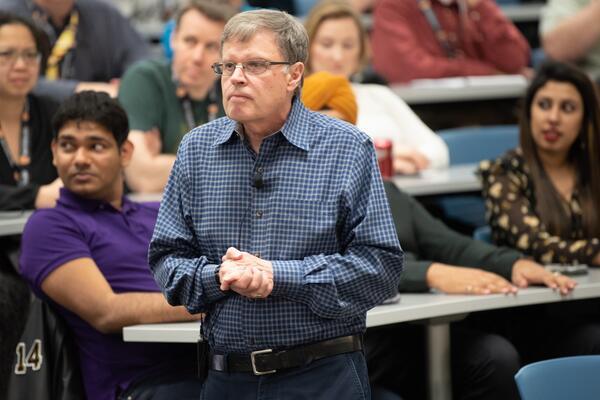
Choosing Waterloo
Waterloo throws open its doors this weekend to welcome future students.

Waterloo throws open its doors this weekend to welcome future students.
By Andrew Smith Marketing & Undergraduate RecruitmentIt’s decision time for nearly 4,000 future students and family members expected to visit the University of Waterloo this weekend.
You@Waterloo Day, taking place Saturday, May 25, offers students who have received an undergraduate offer of admission the chance to meet professors, staff, and students; take campus or residence tours; and speak with current students about their personal "Waterloo experience."
"You@Waterloo Day is a chance for students who have been admitted to Waterloo to visit and see if we are the right fit for them," says Kathryn Fedy, manager of the Visitors Centre. "Tours and information booths will allow students and their parents to ask questions and gain a more detailed understanding of university life at Waterloo."
 The open house takes place as the deadline approaches for high school students across the province to choose where they will attend university this September.
The open house takes place as the deadline approaches for high school students across the province to choose where they will attend university this September.
A popular goal of students visiting Waterloo at this time of year is to see the residence buildings where they might be living in September. Throughout the day, visitors can tour Waterloo's main campus and affiliated university colleges. Campus tours last 45 minutes and start from the Physical Activities Complex (PAC).
You@Waterloo Day

Read more
Shop Canadian this holiday season with festive porch plants, fashion-forward apparel, craft spirits and more from Waterloo entrepreneurs

Read more
For more than four decades, Waterloo professor Larry Smith has helped build the University's reputation for innovation and entrepreneurial excellence

Read more
The Shanghai Ranking Consultancy also ranks 13 Waterloo subjects in the top 50 in the world
The University of Waterloo acknowledges that much of our work takes place on the traditional territory of the Neutral, Anishinaabeg, and Haudenosaunee peoples. Our main campus is situated on the Haldimand Tract, the land granted to the Six Nations that includes six miles on each side of the Grand River. Our active work toward reconciliation takes place across our campuses through research, learning, teaching, and community building, and is co-ordinated within the Office of Indigenous Relations.